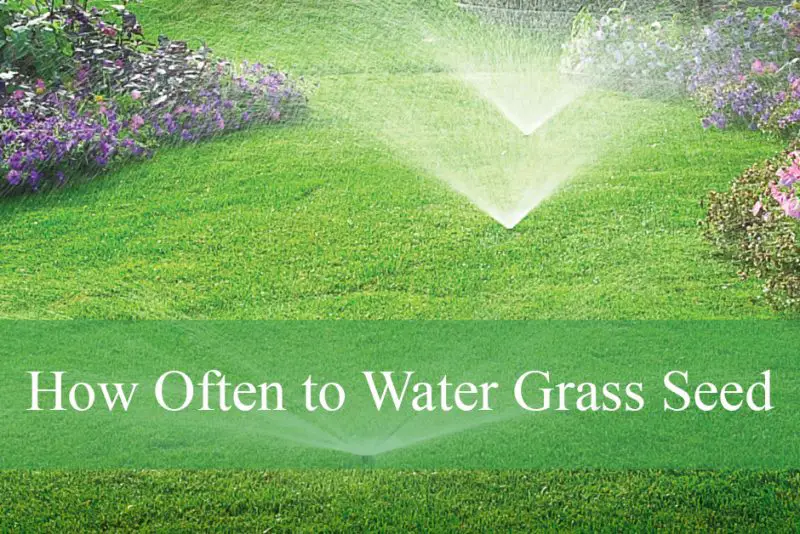Watering grass seed properly is one of the most important steps to establishing a lush, healthy lawn. Many homeowners invest time and money in seeding their yards, only to be disappointed when the grass grows in thin, uneven, or not at all. The most common cause of failure is improper watering—either too much or too little. Understanding how often to water grass seed, especially in different climates, can dramatically increase the success rate of seed germination and lawn establishment.
Grass seed is extremely sensitive during its early stages of development. Until it germinates and establishes roots, it depends entirely on surface moisture to thrive. Inconsistent watering can lead to patchy results, as some seeds may dry out and die before they sprout. On the other hand, overwatering can drown seeds or wash them away before they take root. The key is finding the right watering frequency and depth, tailored to your specific environmental conditions.
The Science Behind Watering Grass Seed

Before diving into climate-specific advice, it helps to understand why watering is so crucial during the grass seed’s early life. When you scatter grass seed over prepared soil, each seed must absorb enough moisture to begin germination. This process involves reactivating the seed’s biological functions, which starts with moisture penetrating the seed coat.
Once moist, the seed begins to swell and activate enzymes that trigger growth. However, if the seed dries out before the process completes, germination halts and the seed may not recover. This is why consistency is vital. The top layer of soil must remain evenly moist—not soggy—for the entire germination period, which can range from 5 to 21 days depending on the grass variety.
After germination, the seedlings will begin to grow roots and shoot upward. At this point, the watering strategy must shift slightly. Deeper, less frequent watering encourages root development and drought tolerance. But reaching that stage requires a solid foundation of early care, especially in the form of precise watering.
Factors That Influence Watering Frequency
The question of how often to water grass seed doesn’t have a single answer because several variables come into play. Soil type is one of the biggest factors. Sandy soils drain quickly and require more frequent watering, while clay soils retain moisture longer and need less frequent irrigation. Loamy soils offer the best balance for seed growth and moisture retention.
Another important factor is sun exposure. Lawns in full sun lose moisture faster than those in shaded areas. Wind exposure, slope of the lawn, and even the seed variety can all affect how quickly the soil dries out and how often you need to water. That’s why observing your lawn daily and adjusting based on actual conditions is more effective than sticking to a rigid schedule.
Watering Grass Seed in Hot, Arid Climates
In regions with hot, dry weather such as the Southwest United States, grass seed faces an uphill battle. High temperatures and low humidity cause rapid evaporation, which means the soil can dry out just hours after watering. In these climates, newly seeded lawns may require watering two to three times per day.
Early morning watering helps the seed absorb moisture before the sun becomes intense, while a second round in the early afternoon may be needed to combat midday drying. In extreme heat, a light third watering in the evening can keep the topsoil moist overnight. It’s important to avoid flooding the area; light, even watering is more effective than heavy soaking.
After the grass begins to germinate, gradually reduce the frequency while increasing the depth of each watering. This transition helps the roots grow deeper into the soil, making the lawn more drought-resistant. Mulching with a light layer of straw can also help retain moisture in arid environments, creating a microclimate that supports steady germination.
Watering Grass Seed in Humid, Tropical Climates
In humid and tropical climates, such as parts of the Southeast, the air is often saturated with moisture, and evaporation occurs more slowly. This reduces the need for frequent watering, but it also increases the risk of overwatering and fungal disease. In these regions, grass seed typically requires watering once or twice a day, depending on rainfall and cloud cover.
Early morning remains the best time to water, as it allows moisture to be absorbed before temperatures peak and gives the surface time to dry before nightfall. Evening watering should be avoided in humid climates, as it can lead to prolonged moisture on the surface and invite fungal growth.
Because rainfall can be sudden and heavy in tropical regions, it’s important to monitor your local weather. If it rains, you may be able to skip scheduled watering. But if rainfall is followed by intense sun, the topsoil can dry out again quickly, so remaining vigilant is crucial during the seed establishment phase.
Watering Grass Seed in Temperate, Moderate Climates
Temperate climates with moderate rainfall and temperature fluctuations offer some of the best conditions for growing grass seed. In these areas, watering once or twice a day is usually sufficient to keep the soil moist. Depending on the season and cloud cover, some days may not require watering at all.
The key to success in temperate regions is consistency. Even if the weather feels mild, a sudden drop in humidity or rise in temperature can dry the soil surface. Monitoring the soil condition by touch is one of the simplest and most reliable methods. If the top half-inch of soil feels dry, it’s time to water.
Spring and early fall are the best times to seed grass in temperate zones, as the weather typically supports slow and steady growth. During these seasons, less water may be needed compared to mid-summer, but you should still maintain a routine to avoid drying out the seedbed.
Watering Grass Seed in Cold or Mountainous Climates
In colder climates or high-altitude regions, the growing season is shorter and often begins later in the year. Seeding is usually done in late spring or early summer, once the ground has thawed and nighttime temperatures remain above freezing. In these climates, the challenge is not usually evaporation, but rather slow germination and unpredictable weather.
Watering grass seed once per day is typically sufficient, especially if the temperatures stay cool and there is occasional rainfall. In these regions, it’s important to water in the morning so the grass seed has time to dry before nighttime temperatures drop. Wet, cold soil can delay germination and promote rot.
Because growth is slower, it may take longer to see results. However, patience and consistent watering will eventually lead to successful establishment. Choosing grass seed varieties that are well-suited to cool climates will also improve the likelihood of success.
Transitioning from Germination to Establishment
Once your grass seed has germinated and young blades are beginning to appear, the focus of your watering routine should shift. Shallow, frequent watering needs to give way to deeper, less frequent irrigation. This change supports the development of strong, deep root systems, which are essential for long-term lawn health.
At this stage, watering every other day with a higher volume of water encourages roots to grow downward in search of moisture. This makes the lawn more resilient during dry periods and less dependent on constant irrigation. Continue monitoring soil moisture regularly to prevent stress or drying, especially during warmer periods.
If the grass begins to look wilted or discolored, that may be a sign of underwatering. On the other hand, if you notice persistent sogginess or a musty smell, you may be watering too much. Balancing moisture at this stage is critical to transitioning successfully from seed to mature lawn.
The Role of Soil Preparation and Mulching
Before you even sow grass seed, soil preparation can make a significant difference in how effectively it retains moisture. Loosening the top few inches of soil helps with water absorption and root penetration. Adding compost or organic matter improves both drainage and water retention, creating an ideal environment for seed growth.
Mulching the seeded area with a light covering of straw or specialized seed mulch helps preserve moisture and protect seeds from wind, birds, and temperature extremes. This layer acts as a buffer that keeps the topsoil from drying out too quickly and reduces the frequency of watering required in most climates.
It’s important that the mulch is not applied too thickly, as that can suffocate the seeds or block sunlight. A thin, even layer will offer the best results while still allowing the grass to grow through as it germinates and establishes.
Irrigation Tools and Techniques for Success
The tools you use for watering can impact the effectiveness of your efforts. A fine spray nozzle or oscillating sprinkler is ideal for watering grass seed, as it distributes water evenly without displacing the seed. Avoid using high-pressure nozzles or hoses that can wash seeds away or create uneven wet spots.
For large areas, an automated sprinkler system with timers can ensure consistent watering even when you’re not home. In smaller yards, a manual sprinkler or handheld hose works well as long as you monitor it closely. Whichever method you choose, the goal is to keep the topsoil evenly moist without creating puddles or letting it dry out.
Regular observation and adjustment based on weather and soil conditions are more effective than relying strictly on a fixed schedule. Being attentive to your lawn’s needs will lead to stronger growth and a more uniform lawn.
Avoiding Common Mistakes When Watering Grass Seed
Many homeowners make the mistake of watering too heavily in the beginning, which can cause the seeds to float or wash away. Another common error is letting the soil dry out for even a single day during the critical germination period, which can stop the process entirely. Striking the right balance requires attention, patience, and flexibility.
Cutting back on watering too early can also hinder root development. Even after the grass is visibly growing, it still needs consistent moisture until it’s fully established. Continue careful watering for several weeks after germination to ensure long-term success.
In all climates, overwatering remains a risk. Excess water not only wastes resources but also encourages disease and weakens the grass by promoting shallow roots. Monitoring both weather and soil moisture, especially during the early stages, helps you avoid these common pitfalls.
FAQ About How Often to Water Grass Seed
How often should I water newly planted grass seed?
Newly planted grass seed should be watered at least once or twice a day to keep the top layer of soil consistently moist. In hot or dry climates, you may need to water up to three times daily to prevent the seed from drying out.
Can I overwater grass seed?
Yes, overwatering grass seed can lead to soggy soil, which may cause seeds to rot, wash away, or encourage fungal growth. Light, frequent watering that keeps the soil moist—but not saturated—is ideal.
When is the best time of day to water grass seed?
The best time to water grass seed is early in the morning. This allows the water to soak into the soil before the heat of the day and gives the surface time to dry, which helps prevent disease. Avoid watering in the evening, especially in humid climates.
How long should I continue frequent watering after grass starts to grow?
Continue frequent watering until the grass reaches about 2–3 inches tall and has developed strong roots. Then, transition to deeper, less frequent watering to promote root growth and long-term lawn health.
Does the climate affect how often I should water grass seed?
Absolutely. In hot, arid climates, more frequent watering is needed due to fast evaporation. In humid or cool climates, watering less often may be sufficient. Always adjust based on your region’s temperature, rainfall, and soil conditions.
Final Thoughts on Watering Grass Seed in Every Climate
Growing a new lawn from seed requires more than simply spreading seed and hoping for the best. Watering is one of the most important aspects of the process, and its success depends largely on tailoring your approach to your local climate. From arid deserts to cool mountain valleys, every environment presents unique challenges that can be overcome with thoughtful planning and consistent care.
By understanding how water interacts with soil, seed, and climate, you can create the ideal conditions for germination and root development. With the right techniques and timing, you’ll set the stage for a vibrant, thick lawn that not only looks beautiful but also stands up to foot traffic, pests, and drought. Water wisely, and your efforts will pay off for seasons to come.






